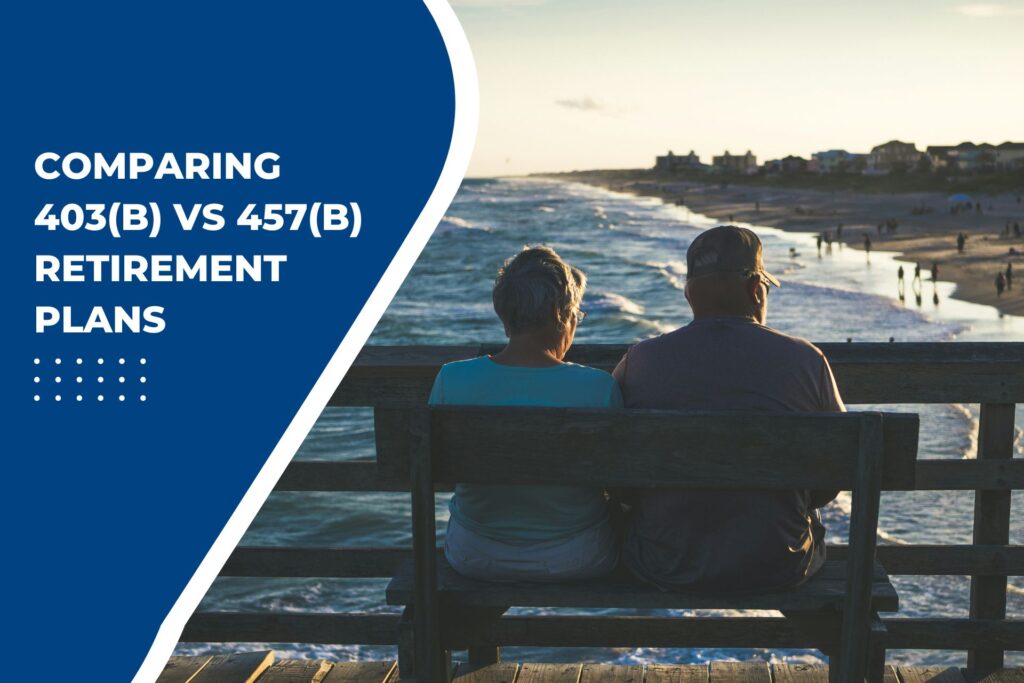Introduction: 403b vs 457b
In the realm of retirement planning, navigating through various options can be daunting. 403b vs 457b plans are two such retirement savings vehicles that cater to specific groups of employees: those in the nonprofit sector and certain governmental employees, respectively. Both plans offer tax advantages and help individuals save for retirement, but they differ significantly in terms of eligibility, contribution limits, withdrawal rules, and other key features.
403b Retirement Plan
A 403b plan is tailored primarily for employees of nonprofit organizations, such as schools, hospitals, and religious institutions. It allows eligible employees to save for retirement on a tax-deferred basis. Here’s a breakdown of its key features:
- Eligibility: Typically available to employees of public schools, tax-exempt organizations under section 501(c)(3) of the Internal Revenue Code, and certain ministers.
- Contributions: Employees can contribute a portion of their salary into the plan, often through salary reduction agreements, where contributions are deducted from their paycheck before taxes are calculated.
- Contribution Limits: The IRS sets annual contribution limits, which may vary year to year. For 2024, the limit is set at $20,500, with a catch-up contribution of an additional $6,500 for those aged 50 and above.
- Withdrawal Rules: Withdrawals are generally allowed penalty-free after the age of 59½. Withdrawals before this age may incur a 10% early withdrawal penalty, in addition to income taxes.
457b Retirement Plan
On the other hand, a 457b plan is designed for employees of state and local governments, as well as certain tax-exempt organizations. It offers unique advantages tailored to governmental employees:
- Eligibility: Available to employees of state and local governments, as well as certain tax-exempt organizations under IRC section 501(c).
- Contributions: Similar to the 403b, contributions are made on a pre-tax basis, reducing taxable income and allowing for potential tax-deferred growth.
- Contribution Limits: The contribution limits for 457b plans also follow IRS guidelines. For 2024, the limit mirrors that of the 403b at $20,500, with the same catch-up provision of $6,500 for individuals aged 50 and older.
- Withdrawal Rules: Withdrawal rules for 457b plans differ slightly from those of 403b plans. While withdrawals are generally allowed penalty-free upon separation from service (after retirement), withdrawals may also be subject to a 10% early withdrawal penalty if taken before reaching age 59½, in addition to income taxes.
Comparing 403b vs 457b Plans
403b vs 457b plans share several similarities, including tax-deferred contributions and potential employer matches, where applicable. However, they differ significantly in terms of eligibility criteria and withdrawal rules, reflecting their intended audiences and the nature of the organizations they serve.
| Aspect |
|---|
403b
457b
Eligibility
403b plans are geared towards employees of nonprofit organizations
457b plans cater to governmental employees and certain tax-exempt entities.
Contribution Limits
The elective deferral limit is $23,000 for 2024.
Participants aged 50 and over can make additional catch-up contributions of $7,500, bringing the total potential contribution to $30,500.
The elective deferral limit is also $23,000 for 2024.
Similar to 403b plans, participants aged 50 and over can contribute an additional $7,500, for a total potential contribution of $30,500.
Withdrawal Flexibility
10% penalty before age 59½, plus regular income tax
No penalty before age 59½, but subject to regular income tax
Want to Know More about Pension Plans?
Click here to Schedule a Free Consultation Today!Which Plan is Right for You?
Choosing between a 403b or 457b plan depends largely on your employment status and the nature of your employer:
Nonprofit Employees
If you work for a nonprofit organization, a 403b plan offers a tax-efficient way to save for retirement, with specific benefits tailored to nonprofit employees.
Governmental Employees
Governmental employees and certain tax-exempt organizations may find a 457b plan more suitable, given its unique withdrawal rules and potential advantages in retirement planning.
Conclusion
In summary, both 403b and 457b plans provide valuable retirement savings options with tax advantages. Understanding the nuances between these plans can empower you to make informed decisions about your financial future. Whether you’re eligible for a 403b plan through a nonprofit employer or a 457b plan with a governmental entity, exploring these options and consulting with a financial advisor can help you maximize your retirement savings potential.


